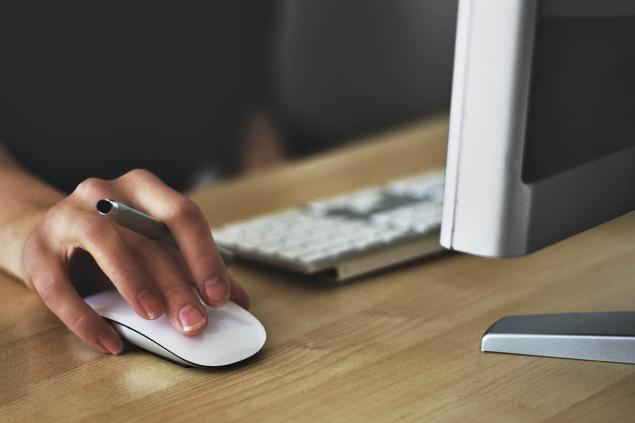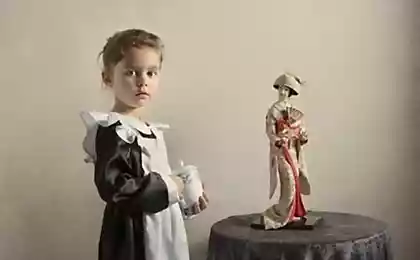184
A friend at school was constantly offended because she had a short thumb, but this is not a reason for ridicule
My classmate had thumb. And this, of course, became a cause for ridicule from the main hooligans of our class. It was not until many years later that I learned that this phenomenon was called brachidactyly. This is a natural anomaly that is unacceptable to mock! How exactly it affects a person, we find out later in the article.

The very name of the disease describes what it means. The term brachydactyly consists of two ancient Greek words: brachys, short, and daktylos, finger. If a person has at least one short finger on their hands or toes, this indicates the presence of a genetic abnormality.
This can occur to varying degrees, from mild shortness to complete absence of fingers. Brachydactyly can be congenital or acquired as a result of injury or illness. For example, I have a friend who has suffered from an injury at work.

There are different types of brachydactyly depending on the frequency of occurrence in the population and the clinical picture. For example, types A3 and D are considered the most common forms of short fingers. Under the anomaly gets either the little finger, or the last joint of the thumb or toe. The phenomenon often occurs in parallel on both hands or feet. Rarely does it happen on just one limb.
Brachydactyly is a hereditary malformation. If you have a similar problem, it can also affect your children. Interestingly, a natural anomaly is more common in women than in men. One study found that 21% of Japanese schoolchildren have A3-type brachydactyly.

Peels Brachydactyly is a problem that often affects a person’s self-esteem. After all, hands catch your eye almost first of all when you meet. And sometimes non-compliance with the so-called norms creates complexes.
It is also interesting that brachydactyly can only be a symptom of other ailments. These include, for example, tuberous sclerosis. This is a very serious disease, as a result of which a person suffers both physically and mentally.
Despite the fact that brachidactyly itself is not a dangerous condition, it can lead to some inconveniences and limitations.
If you suffer from brachidactyly and feel discomfort in the fingers or toes, be sure to consult a specialist. And remember, the length of your fingers should not bother anyone. Your body is your business!

The very name of the disease describes what it means. The term brachydactyly consists of two ancient Greek words: brachys, short, and daktylos, finger. If a person has at least one short finger on their hands or toes, this indicates the presence of a genetic abnormality.
This can occur to varying degrees, from mild shortness to complete absence of fingers. Brachydactyly can be congenital or acquired as a result of injury or illness. For example, I have a friend who has suffered from an injury at work.

There are different types of brachydactyly depending on the frequency of occurrence in the population and the clinical picture. For example, types A3 and D are considered the most common forms of short fingers. Under the anomaly gets either the little finger, or the last joint of the thumb or toe. The phenomenon often occurs in parallel on both hands or feet. Rarely does it happen on just one limb.
Brachydactyly is a hereditary malformation. If you have a similar problem, it can also affect your children. Interestingly, a natural anomaly is more common in women than in men. One study found that 21% of Japanese schoolchildren have A3-type brachydactyly.

Peels Brachydactyly is a problem that often affects a person’s self-esteem. After all, hands catch your eye almost first of all when you meet. And sometimes non-compliance with the so-called norms creates complexes.
It is also interesting that brachydactyly can only be a symptom of other ailments. These include, for example, tuberous sclerosis. This is a very serious disease, as a result of which a person suffers both physically and mentally.
Despite the fact that brachidactyly itself is not a dangerous condition, it can lead to some inconveniences and limitations.
- Functional limitations. People with brachydactyly may find it harder to perform certain tasks that require precision and fine motor skills, such as writing, buttoning, tightening shoelaces, and so on. This is especially true of old people.

Peels - Difficulties in everyday life. Common tasks such as using tools, cooking, taking care of yourself, and others may require extra time and effort.
- Emotional aspects. People with brachydactyly may experience emotional difficulties, such as low self-esteem or feeling dissatisfied with their appearance.

- Social aspects. In some cases, people with brachydactyly may feel isolated or face misunderstandings, especially if their appearance raises questions.
- Medical aspects. In severe cases of brachidactyly, problems with joints, muscles, or bones may occur, which may require medical attention and rehabilitation. This should be taken seriously, because you can not tolerate constant pain in the fingers. In the future, this can lead to even more serious problems. 959171.
If you suffer from brachidactyly and feel discomfort in the fingers or toes, be sure to consult a specialist. And remember, the length of your fingers should not bother anyone. Your body is your business!
Almost every house has such a spoon, but few people know why it is needed.
My husband and I went to Canada, and my sister stayed at home, who looked after my mother, and I sent them money regularly.

























